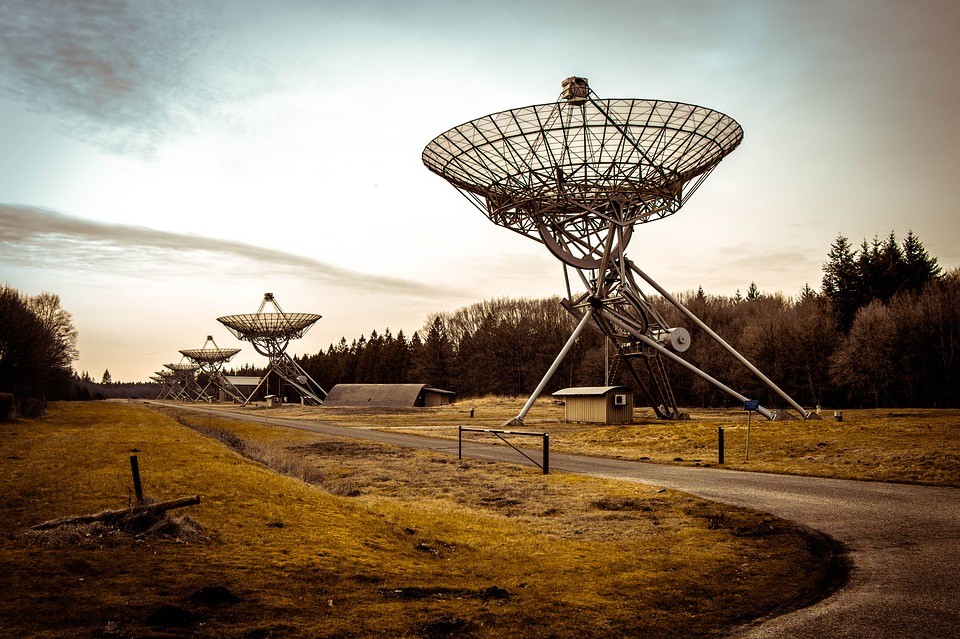
By Heather Hamilton, contributing writer
Radio pulses from a dwarf galaxy 3 billion light years from Earth were uncovered by astronomers with the Breakthrough Listen project on the hunt for alien civilizations. Their source is unknown, but the 15 radio bursts may be coming from black holes or rotating neutron stars with strong magnetic fields, according to an article in the Guardian. Others have suggested that perhaps we’re dealing with aliens.
Science Alert reports that, in the eight years since radio bursts were first detected, astronomers have only been able to confirm a small number of events that occurred erratically and in different parts of the universe. Then, in 2012, the researchers detected 24 fast radio bursts lasting only milliseconds, which were later determined to come from FRB 121102, which sits in a dwarf galaxy 3 billion light years away. According to Science Alert, these radio bursts generate as much energy as 500 million suns in one millisecond.
The latest signals emanate from the same source but come at a higher frequency, though researchers aren’t sure what this means. “As well as confirming that the source is in a newly active state, the high resolution of the data obtained by the Listen instrument will allow measurement of the properties of these mysterious bursts at a higher precision than ever before,” said Vishal Gajjar, the Breakthrough Listen postdoctoral researcher who discovered the activity.
Astronomers confirmed that the signals were emitted from the same dwarf galaxy as those previously recorded by looking at their dispersal, which gives an indication of how far sound travels before we hear it. In the Astronomer’s Telegram, the team wrote that their observations may indicate a heightened activity state and recommended additional observations at higher radio frequencies.
“The extraordinary capabilities of the back-end receiver, which is able to record several gigahertz of bandwidth at a time, split into billions of individual channels, enable a new view of the frequency spectrum of FRBs, and should shed additional light on the processes giving rise to FRB emission,” writes Gajjar.
The Breakthrough Listen project, established by Stephen Hawking and Russian billionaire Yuri Milner, is a $100M project set up to find signs of intelligent life throughout the universe. The project utilizes the Green Bank Observatory in West Virginia and Parkes Observatory in New South Wales and offers 50 times the sensitivity and 10 times the coverage of other searches for alien life.
The signals were picked up in the early morning on Saturday, August 26 via the Green Bank Telescope in West Virginia, pointed at FRB 121102. Over five hours, the telescope captured 400 terabytes of data across the 4 to 8 frequency band.
“Whether or not fast radio bursts turn out to be signatures of extraterrestrial technology, Breakthrough Listen is helping to push the frontiers of a new and rapidly growing area of our understanding of the universe around us,” said Breakthrough director Andrew Siemion.
And, while Breakthrough Listen would like to find aliens, they observe that when the pulses originated in their host galaxy, the solar system would have not yet been 2 billion years old, meaning that it would be a billion years before there was any life on Earth — and, therefore, someone attempting to communicate with us was fairly unlikely.
Sources: Guardian, New Scientist, Science Alert, Astronomer’s Telegram, UC Berkeley
Image Source: Pixabay; CC0 Creative Commons
Advertisement
Learn more about Electronic Products Magazine





